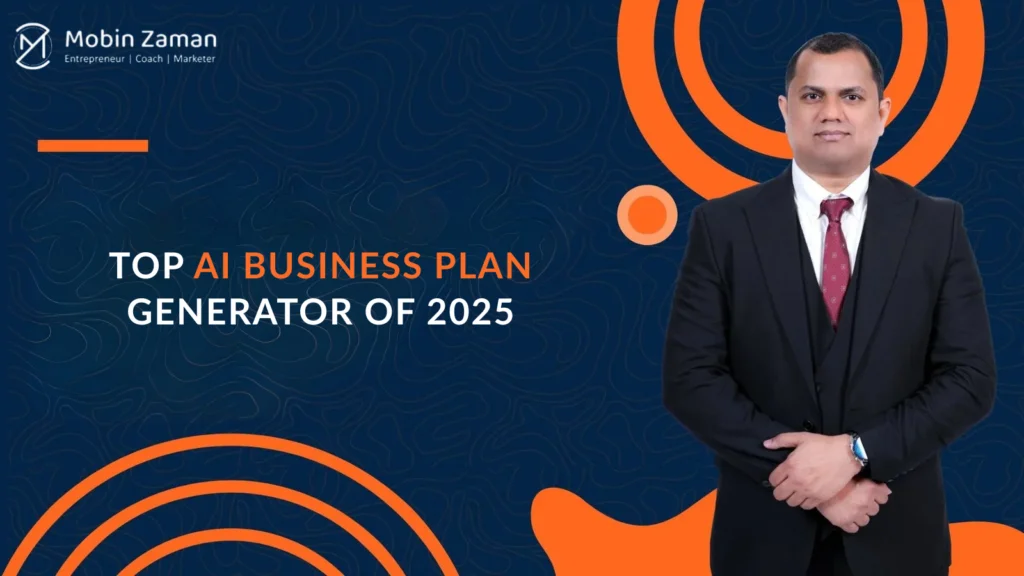In 2025, starting a business often begins with a plan. But writing a good business plan is not easy. You need market research, financial projections, competitive analysis, goals, strategies, and more. The same is why, many entrepreneurs feel stuck and overwhelmed by the blank page.That is where an ai business plan generator comes in. This kind of tool can help you create an outline for your business, based upon your personalized goals, requirements and tailored timelines. So, without any further discussion, let us dig into the content.
Let’s begin.
What is an AI Business Plan Generator?
An ai business plan generator is software (often web-based) that uses artificial intelligence (especially natural language generation) to produce a draft business plan for you, based on your inputs. Instead of writing every section yourself, you give the tool some information—your business idea, market, product, costs, and goals. Hence, the tool helps you generate text (executive summary, mission, product description, marketing plan) and create financial projections (revenue, cost, profit).
Furthermore, it also suggests strategies or risks and formats a plan that looks presentable. In short: it automates much of the planning effort, letting you focus more on refining, checking data, and adjusting. Because of advances in generative AI (like large language models), these tools are more capable than ever in 2025.
Why an AI Business Plan Generator Matters in 2025
You might ask: Isn’t writing a business plan a human task? Yes, but AI tools now help speed it up and make it more accessible. Here are reasons why having a strong ai business plan generator is valuable now:
- Time saving
Entrepreneurs often juggle many roles. A tool that can produce a base business plan in minutes frees you to focus on execution, not drafting. - Lower cost
Hiring a consultant or expert to write your plan is expensive. AI tools reduce that barrier and democratize access. - Better structure and completeness
These tools often include templates and checklists, ensuring you don’t miss critical sections (e.g. SWOT, marketing, operations). - Higher AI adoption among small firms
According to a survey by PayPal and Reimagine Main Street, 76% of small businesses are already actively using or exploring AI tools. Also, studies suggest that in 2025, nearly 58% of US small businesses self-identified as using generative AI—up from 40% in 2024.
Thus, using an ai business plan generator is not just a nice-to-have — it’s becoming a smart tool to stay competitive.
What Features to Look for in a 2025 AI Business Plan Generator
Not all tools are equal. When choosing a good ai business plan generator in 2025, watch for:
| Feature | Why it matters |
| Quality of text & coherence | The AI should produce readable, logical, and fairly polished prose. |
| Customizability & editing | You must be able to change sections, tone, or numbers easily. |
| Financial modeling capability | Your tool should help build revenue, cost, profit forecasts, cashflow, balance sheets. |
| Template types | Different business types (product, service, subscription) need varied structures. |
| Export & format options | Export to Word, PDF, presentation, etc. |
| Collaboration / sharing | Ability to share with partners, advisors, or investors. |
| Guidance & help | If the tool gives hints, explanations, or prompts, it’s more helpful for novices. |
| Cost / pricing model | Some are free, some with subscriptions, so you must balance value and budget. |
| Data privacy / security | Your business ideas and numbers should stay safe. |
| Updates & support | Because AI evolves, the best tools will keep improving. |
If a tool lacks many of these, it may not serve you well beyond the first draft.
Top AI Business Plan Generators in 2025
Below is a selection of strong contenders for a business plan generator tools in 2025. This is not a full list, but ones worth checking. (Rankings may change, so always test trial versions.)
1. Upmetrics
Upmetrics is often named one of the top AI business plan generators. Upmetrics+ Its strengths are strong templates, good guidance, and built-in forecast tools. It combines writing help and planning features.
2. PrometAI
PrometAI is built specifically for creating detailed business plans online, often very quickly. PrometAI It strives to let you go from idea to investor-ready plan in minutes.
3. 15MinutePlan.ai
This tool markets that you can “be done in 15 minutes.” 15minuteplan.ai It walks you through forms and then outputs a draft plan. Good for speed.
4. Bizplanr
Bizplanr lets you craft a full plan by inputting your idea, letting AI handle structure and writing. Bizplanr It is simpler and free options are available.
5. Canva AI Business Plan Generator
Canva, known for visual tools, also offers an ai business plan generator that gives you a first draft plan with visual formatting. Canva Good for combining writing and design.
6. VentureKit
VentureKit offers to generate financial forecasts (revenue, expenses, P&L, balance sheets) automatically, along with written sections. Venturekit It is praised in reviews for its intuitive interface. withhansa.com
7. Grammarly (Business Plan Feature)
Though not originally a business plan tool, Grammarly has a feature for generating executive summaries or one-page plans based on prompts. Grammarly+1 Useful for short drafts or overviews.
These are strong options in 2025. Each has pros and cons depending on your needs (depth, speed, budget).
Strengths, Weaknesses, and Tips for Use
Strengths (what AI tools do well)
- Rapid first draft: AI gives you a base you can work from.
- Consistency and structure: The tool helps enforce a logical flow.
- Automated financials: Many tools can compute forecasts with formulas.
- Ease of iteration: You can tweak assumptions and regenerate.
- Accessibility: For people who don’t have writing or planning skills, AI is a helpful assistant.
Weaknesses / challenges
- Generic or generic-sounding content
Sometimes AI produces “safe” text that lacks personality or deep insight. - Errors in numbers or logic
AI may misestimate costs or project unrealistic growth. - Data accuracy matters
The AI’s output is only as good as your inputs (market size, rates). - Overreliance
You should always check and revise the output—don’t accept it blindly. - Ethical or privacy concerns
Sharing sensitive business ideas or financials might risk leaks. - Skill gap in use
Some business owners may struggle to use AI well (especially non-tech users).
A recent research paper “BizChat: Scaffolding AI-Powered Business Planning for Small Business Owners Across Digital Skill Levels” addresses one of those challenges. The authors point out that while generative AI can help automate planning, many business owners have limited digital skills. They propose design strategies (just-in-time guidance, contextual help) to support non-expert users. arXiv
That research shows that tool usability and training matter, not just AI technology itself.
How to Pick the Best AI Business Plan Generator for You
Given several options, here’s a strategy to pick:
- List your priorities
Do you need speed? Depth? Good visuals? Collaboration? Financial modeling? - Try free trials
Many tools offer free or freemium versions. Test them with your real business idea, not a toy idea. - Check output quality
See whether the drafting feels coherent, whether sections connect, and whether the reasoning is acceptable. - Test editing flexibility
Can you easily change numbers or text? If the tool’s output is locked or rigid, it’s less useful. - View export formats
Ensure it can produce a format acceptable to investors or lenders (PDF, PPT, Word). - Check cost and subscription plans
Some tools charge monthly, some by usage. Choose one that fits your budget. - Consider support and updates
You want a tool that stays current, improves, and answers your questions via support channels. - Security & confidentiality
Make sure your business data is kept safe and private.
Using this method, you can find the ai business plan generator that best fits your style and needs.
Tips to Make AI Output Stronger (So It Doesn’t Look AI-Generated)
Even the best AI draft benefits from human editing. Here are tips:
- Refine the tone
Adjust wording to match your brand voice (friendly, formal, bold). - Add specific data
Supply real numbers (market size, growth rates, competitor stats) to anchor the plan. - Insert your unique insight
AI can’t know your personal experience, your local knowledge, or subtle advantages. Add those. - Review logic flow
Sometimes AI jumps steps or repeats ideas—trim repeats and ensure a logical thread. - Check financial consistency
Make sure the numbers are realistic (e.g. cost margins, break-even) and consistent across sections. - Add visuals or charts
Use graphs, charts, or visuals to back up claims—AI might not generate good visuals. - Have a second human review
Let a mentor, investor, or cofounder read it as a skeptic and suggest improvements.
By combining AI speed with human judgment, you get the best result.
A Research Insight: AI Adoption in Firms & Business Planning
To ground this discussion, here is one research insight:
A 2025 paper titled “Artificial intelligence adoption dynamics and knowledge in firms” examines how small and large firms differ in AI implementation and challenges. The paper finds that smaller firms often face knowledge gaps, resource constraints, and lack of internal skills, which hinder adoption. ScienceDirect
Another article, “Strategic AI adoption in SMEs: A Prescriptive Framework”, proposes that small and medium enterprises should follow a phased approach: start with general-purpose AI tools, then move to domain-specific systems, and ultimately in-house customization as maturity grows. arXiv
These studies support the idea that tools like ai business plan generators can act as initial “general-purpose AI tools” to help firms gain confidence, build experience, and reduce barriers to deeper AI use.
So in context, using an ai business plan generator in 2025 is not just a shortcut—it can be part of a broader, strategic AI adoption path for your business.
Example Walkthrough (Hypothetical)
To show how this works in practice, here’s a simplified walkthrough of using an ai business plan generator:
- You input basic details
- Business name: “Smart Clean Tech”
- Sector: eco-friendly cleaning services
- Target market: urban offices, Karachi
- Pricing: subscription / contract model
- Startup costs: cleaning equipment, rent, supplies
- AI drafts main sections
- Executive summary: mission, opportunityMarket analysis: demand for eco cleaning services in citiesCompetitive analysis: traditional cleaning firms, green premium Marketing & sales: SEO, office partnerships, referralOperations: scheduling, staff, supply chainFinancials: revenue, cost, profit projections
- Risk & mitigation: equipment failure, regulation, customer retention
- You review and refine
- Replace generic market numbers with local Karachi or Pakistan stats
- Adjust cost assumptions based on local supply rates
- Add your unique strength (e.g. biodegradable formula, local supply chain)
- Ensure numbers are consistent
- Add charts, visuals
- Export & share
- Download PDF or PPT and send to a mentor or investor
- Use it as roadmap internally
The AI gave you a structure and base content. You provide refining, grounding in reality, and polish.
Final Thoughts & Conclusion
In 2025, the ai business plan generator is becoming an essential tool for entrepreneurs and small business owners. It lowers the barrier to writing a coherent, professional plan. But it is not magic. The AI output is best used as a starting point—your editing, local knowledge, judgment, and validation are crucial.
Here’s a checklist summary:
- Use AI to get a quick, coherent draft
- Pick a tool that offers editing, templates, financials, and security
- Always validate AI output against real data
- Learn some basics of planning so you can guide the AI
- Iterate and refine; don’t rely on the first draft
The research shows that many smaller firms struggle to adopt AI because of knowledge or resource gaps. Tools like AI business plan generators serve as entry points—they let you dip your toes in AI, get value immediately, and gradually build confidence for more sophisticated AI adoption later.

